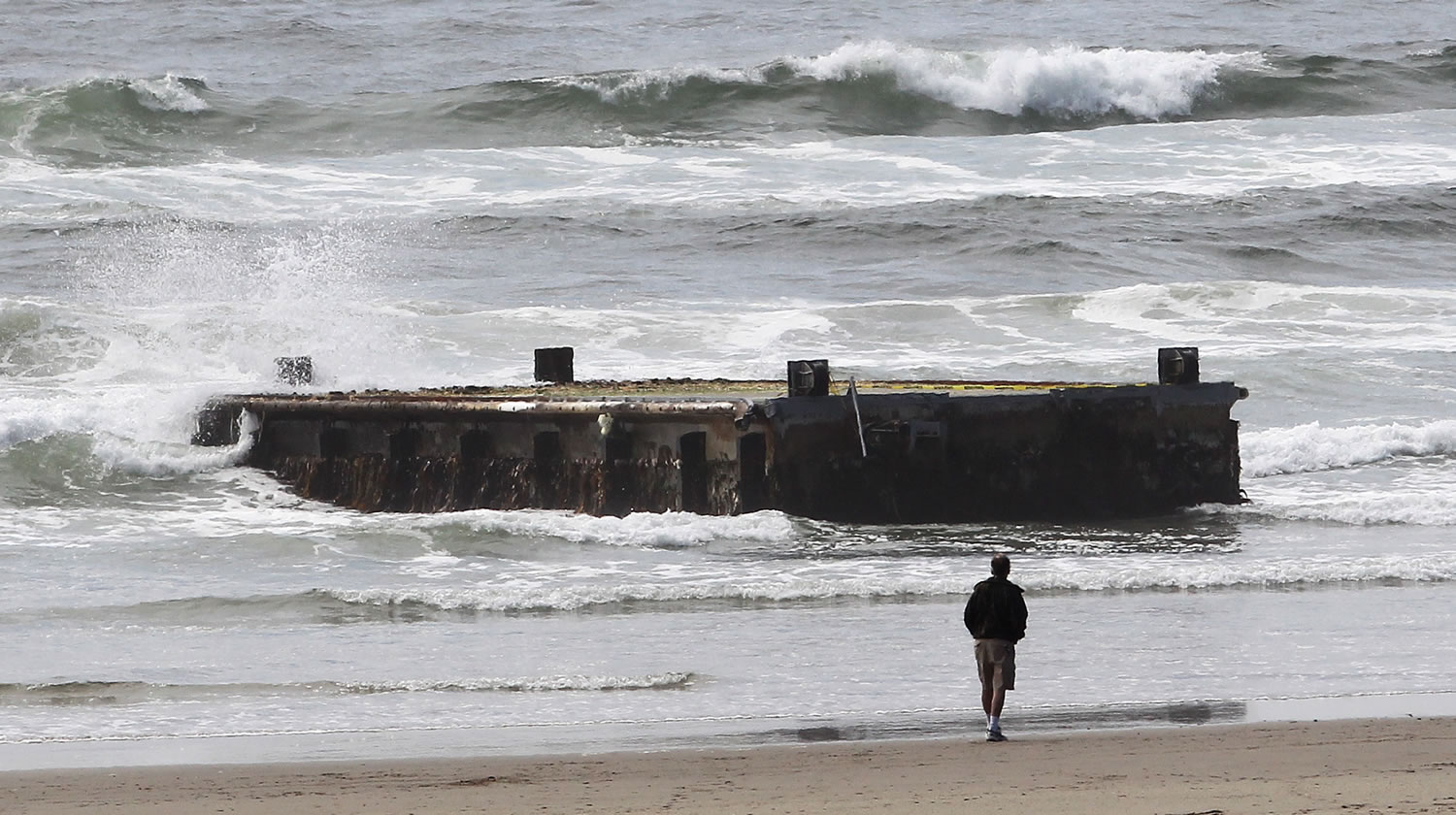SEATTLE — A dock that apparently was ripped away from Japanese waters by a tsunami and drifted for more than a year-and-a-half across 5,000 miles of the Pacific washed ashore on one of the most remote beaches on the West Coast.
It was spotted Tuesday by the Coast Guard on the Olympic Peninsula. Tsunami debris experts didn’t try to reach it by ground until Thursday because of stormy weather and treacherous terrain, said David Workman, spokesman for the state Marine Debris Task Force.
It’s a four- or five-mile walk from the nearest road on little-used trails crossing streams running full from a drenching December storm.
Removing the dock or just scraping it clean of potential invasive species of marine life “is going to be a real challenge to find the right solution,” Workman said.
Officials aren’t disclosing the exact location of the dock to keep people away because of safety concerns.
“It’s a very precarious location to get to, especially in these conditions,” Workman said. “At high tide there’s no beach and you’ve got a bluff.”
The beach is between La Push and the Hoh River on the northwest tip of Washington. The nearest town is Forks — of “Twilight” book and movie fame. It’s about 100 miles west of Seattle.
It’s along 70 miles of wilderness beaches protected by the Olympic National Park. The waters are in the 3,200-square-mile Olympic Coast National Marine Sanctuary.
The tsunami debris task force, made up of federal, state and tribal agencies, wants to secure the dock until they decide how to deal with it, Workman said. Officials are concerned about non-native plants or animals that hitched a ride.
They also need to confirm its Japanese origin.
It’s believed to be similar to the 165-ton concrete and steel dock that washed ashore in June near Newport, Ore. Looking like a railroad boxcar, it was 66 feet long, 19 feet wide and 7 feet high. A plaque identified it as one of four owned by Aomori Prefecture that broke loose from the port of Misawa during the March 2011 tsunami. The docks were used for loading fish onto trucks. Another one turned up several weeks later on an island south of Misawa.
Invasive concerns
Volunteers scraped off 2 tons of seaweed and creatures that were clinging to the Newport dock. Among them were four species — a seaweed, a sea star, a mussel and a shore crab — that are native to Japan and have established themselves as invasive species elsewhere, said Caren Braby, manager of marine resources for Oregon Department of Fish and Wildlife
Officials won’t know for a couple years whether any of them escaped to get a foothold in Oregon, she said.
The scrapings were buried above the high water line. The dock was sterilized with torches, then cut up and removed last summer.
The Olympic dock could get the same treatment to head off a non-native plant or animal taking hold, said state Fish and Wildlife Department spokesman Bruce Botka.
“Our folks are looking at everything at the front end to avoid having a much bigger problem later,” he said.
Sen. Maria Cantwell’s office said the Olympic dock was confirmed as tsunami debris from a photo taken by a fisherman and analyzed by a researcher working under a RAPID National Science Foundation grant to track debris. Cantwell is pushing federal legislation seeking $20 million for tsunami debris removal.
While the dock is likely of Japanese origin, Workman said officials will follow the protocol established by the United States and Japan to reach a definitive conclusion.



